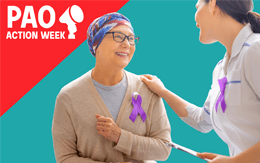In less than 10 years, sales representative access to physicians has dwindled. While 80% of physicians were accessible to representatives in 2008, only about 44% are accessible today. 1 That limit creates significant challenges for pharma and medical sales companies heavy on salesforce promotion. However, every closed door leads to three open windows. When we look closely at the data, we see that physician peer-to-peer programs have the largest upside for medical education. Speaker programs are more effective today than ever before.
Right out of college, I carried a bag for Merck. Fortunately, I had access to most of my healthcare professionals (HCPs). One way or another, my team and I were able to see more than 90% of our targets. We were convinced that we played a part in making a difference in reducing coronary events as we detailed a cholesterol-lowering blockbuster. It was our belief, based on seeing results, that we as sales reps mattered. Today, however, a sales rep’s ability to influence has been curtailed by a lack of access to HCPs.

Physicians listened to the science we presented because they hungered for tools in an age where the Internet was in its infancy and we offered the compelling information they sought. In a few sweeping years, the world of selling pharmaceuticals and biologics has changed dramatically. With regulatory hurdles, guidance from the Office of Inspector General, warning letters from the FDA, and billion dollar fines, arming representatives with game-changing data has become risky. Even when it’s the right thing to do.
Instead of removing the reins from bright people to share compelling stories based on clinical studies, sales reps were given verbatims to memorize and were armed with glossy sales aids as the primary tools for selling. Oftentimes, HCPs began to see sales reps as agents for sample drops and lunch. While HCPs want information that can help improve the care of their patients, they don’t want boilerplate messages. It’s that simple. Physicians will listen if they find the message compelling. Otherwise, they will seek out information on the web communicated by their peers, or from successful marketers who are ahead of the curve, as well as from other scientific outlets.
Although physicians have altered their methods of accessing information from industry, pharma and device manufacturers have been too slow to reduce spending on sales strategies or ramp up spending on professional peer-to-peer strategies. The data are eye-popping—88% of marketing spend is on the sales force, yet only 38% of physician recall comes from the sales force.1 On the other hand, 62% of physician recall comes from about 12% of peer-based promotional dollars.
The effectiveness of peer-to-peer education is now widely understood. Physicians listen to their peers and other experts. Those discussions have successfully driven healthcare. Although we cannot give up on the century-old fact that personal selling works, it’s now time to shift the methods of how we leverage our talented sales reps. The industries’ focus must center around the educational needs of HCPs. To do that, my argument is to more productively get the two strategies—sales and professional—to work together to more efficiently drive HCP education.
First, industry should train sales reps on the nuances of driving attendance to speaker programs. In-person, broadcast, and virtual web speaker programs enable physicians to get the insight they need, to hear from top experts, and to interact with their colleagues and sales reps.
Veteran device and biologic sales professional, Ida Shahfari, president of Pinnacle 321, LLC, a medical sales distributor in cell therapy and regenerative medicine and orthopedics, explained, “Successful speaker programs relay to the physician that the rep understands and wants to meet the issues and needs of the physician by providing a program worthy of his/her time. Speaker programs are certainly about education, but they are about so much more: connection, validating the relationship the rep has with the targeted physician, meeting the needs of the physicians, providing meaningful peer-to-peer interactions and discussions, advancing the care of the patient by reaching a broader audience of physicians.”
These are the words of someone who doesn’t just look at her customers as a means to an end, but sees herself as having a partnership—influencing physicians to do the right thing which leads to improving patient lives. That’s a compelling story.
A second method of improving program effectiveness is for marketing departments to help individual sales professionals tailor the channels that they use to the preferences of their target audience. Have you ever attended a national broadcast with polling questions and noticed the results? Often, no more than 70% of the audience gets the answer correct. We aren’t talking about highly complicated questions, but the questions—and often the content—are not focused on individual channels. In other words, messages stick when they connect with the audience on social, emotional, and pragmatic levels. The nontargeted audience won’t connect and this lack of connection usually leads to a wasted interaction. Do you think they’ll attend another program again? Perhaps, but similar to when you invite guests into your home, you aim to make sure they share the same interests and enjoy socializing together, the same circumstances apply here.
Look carefully at your marketing channels: specialists, primary care, nurse practitioners, physician assistants, pharmacists, nurses, etc, and create programs tailored for each particular audience. Sales reps are very bright—they can help carry through this segmentation strategy. Shahfari added, “Effective recruitment is essential for a successful program because you have a great plan setting up and preparing the program, but if you cannot get the targeted customers to attend, then it is a wasted investment.”
Give freedom to the sales force to drive peer-to-peer education, it’s time well spent away from selling. Most importantly, it’s what HCPs want—and you want informed customers. Along the way, make sure you build a strategy for each channel so that customization will drive well-intentioned education and ultimately help those patients we all desire to serve.
For more information about virtual, broadcast, and live in-person speaker programs, contact me directly at drehal@vision2voice.com.





